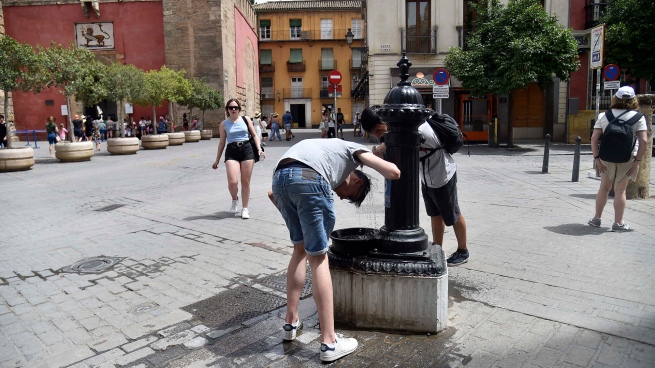The historic early heat wave in Europe, which has hit France and Spain particularly since Thursday, began to decline this Sunday in the southwest and west of the continent, moving the high temperatures to the east, where the thermometer would reach 38 degrees.
After registering temperatures even above 40 degrees, and numerous heat records broken on Saturday in France, the stormy weather expected on Sunday would “gradually lessen” the heat wave, according to Météo France.
? 52 dpts in #vigilanceOrange
Restez informed south https://t.co/rJ24zzmmy4 pic.twitter.com/aRMFe1Z2b9
— VigiMéteoFrance (@VigiMeteoFrance) June 19, 2022
This Sunday Météo France lifted the red alert in the southwest of the country, while 50 departments in the center and northeast were placed on orange alert, and 32 remain on yellow alert, reported the entity in its morning bulletin, according to the AFP news agency.
The French meteorological service had recorded “peaks close to 42°/43°C” in the southwest on Saturday, with records in Biarritz (42.9°C), in the Basque Country; at Cap-Ferret (41.9°C), in the Bay of Arcachon; or in Biscarrosse, in the Landes (41°C, a record that equaled that of 1968).

The symbolic barrier of 40 °C was also reached by several western regions. In Paris, the thermometer stopped at 37 ° C and its inhabitants turned to the city’s fountains before the prohibition of bathing in the Seine river.
“This is the earliest heat wave recorded in France” since 1947, said Matthieu Sorel, climatologist at Météo-France, who insists it is a “marker of climate change.”
In southern France, the firing of an artillery shell at a military training site in the Var department – where Saint Tropez is located – sparked a fire that burned some 600 hectares, authorities said. Two other fires broke out in the territory.
In Spain, firefighters were still fighting several fires, one of which has already devastated 20,000 hectares in the northwest, in what It is expected to be the last day of the heat wave.

The most dangerous fire advanced this Sunday in the Sierra de Culebra, a mountainous massif in the Castilla y León region, near the border with Portugal, and had already devoured more than 25,000 hectares, the regional government reported.
The inhabitants of some 20 villages that had been evacuated were allowed to return to their homes today, according to local authorities.
In other regions of Spain, the emergency services were fighting smaller fires, such as in Catalonia (northeast) and Navarra (north), one of the few areas where temperatures were still very high this Sunday.
The fires also caused the closure of a highway and a high-speed train line between Madrid and Galicia (northwest).
The Spanish meteorology agency Aemet agrees that these records should end this Sunday.

Spain, which had already experienced the warmest month of May since the beginning of the century, has suffered four episodes of extreme temperatures in the last ten months, including the current heat wave.
The heat wave also reached Germany on Friday and this Saturday temperatures reached a record 36.4ºC in Waghäusel-Kirrlach in the southwest, according to the German Meteorological Institute (DWD).
The country is also suffering from fires, including one in Brandenburg, the region around Berlin where 60 hectares were burned.
The United Kingdom is not spared from high temperatures. Authorities recorded their hottest day of the year on Friday, with temperatures topping 30C in the early afternoon.
And in northern Italy, several cities announced water rationing. In addition, the Lombardy region could declare a state of emergency, as a record drought threatens crops.

















